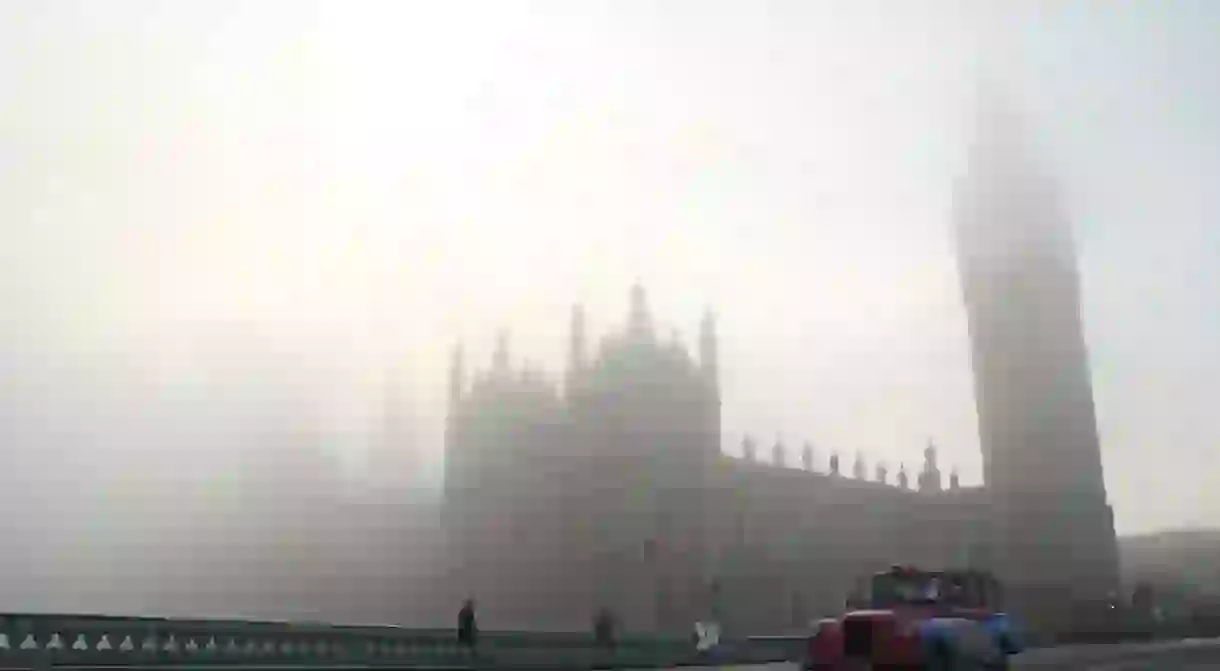A Brief History of London Fog to know

With plans for the pedestrianisation of Oxford Street recently announced by Sadiq Khan, Mayor of London, the quality of London air remains a hot topic. But, while concern about dirty air may seem like a relatively modern issue, in reality it has been a point of discussion between Londoners for centuries, long even before the Industrial Revolution, the period we now associate with the misery of pollution, thanks to the work of writers such as Charles Dickens and William Morris. Here, we take a look at the long and murky history of London’s fog.
Origins since the late 1200s
Londoners have been complaining about unclean air since at least 1272. After the 12th century, shrinking woodland areas in and around London caused households to switch from wood-burning fires to those that used ‘sea-coal’ from the North coast. An inefficient burner, sea-coal produced clouds of smoke in place of heat-energy, leading King Edward I to ban its sale or consumption on pain of torture and death. However, wood was now too expensive, and few complied in spite of executions.

Natural vulnerabilities
London’s basin location in the Thames estuary had always made it prone to natural mist, with moisture becoming trapped by the surrounding hills; but coal smoke combined with natural fog to create a ‘pea-souper’, a thick smog that could last for days. London’s troubles with smog persisted right through the 1800s — the very term ‘smog’ was coined by an oxygen-starved Londoner in 1905.
The most devastating fog
In 1873 came the first unusually thick and persistent fog, which caused at least 268 deaths from bronchitis. In 1879, a fog lasted for four whole months, but still no reform was passed — at the height of the coal-fuelled industrial revolution, there was no alternative with which to power progress. Gradually, from the 1890s, electric engines replaced steam, gas fires grew in popularity in London homes and heavy industry began to relocate to the city’s outskirts, easing the frequency of fog slightly.

A major disruption
Then, in 1952, a four-day fog dubbed The Great Smog hit amid a perfect storm of weather conditions, causing major disruption in transport. Every transport service apart from the London Underground ceased (including emergency services) due to a horrendous level of visibility — indoor performances were abandoned when the smog seeped indoors, blocking cinema screens and stages from view. Though smog-weary Londoners didn’t panic at first, weeks later 4,000 Londoners were found to have been killed, with 100,000 more made seriously ill, thereby forcing parliament to act (the number killed is now estimated to be closer to 12,000). In 1956 they passed the Clean Air Act, introducing smoke-free areas in cities, limiting the burning of coal and offering households incentives to install gas fires.
Modern-day issues
Though today smothering, pollutant-caused smog is mainly associated with major cities in nations like China, London still suffers from poisonous air, with almost 10,000 Londoners per year thought to die prematurely as a result of particulate or NO2 pollution mainly caused by vehicle emissions.
Did you know – Culture Trip now does bookable, small-group trips? Pick from authentic, immersive Epic Trips, compact and action-packed Mini Trips and sparkling, expansive Sailing Trips.













